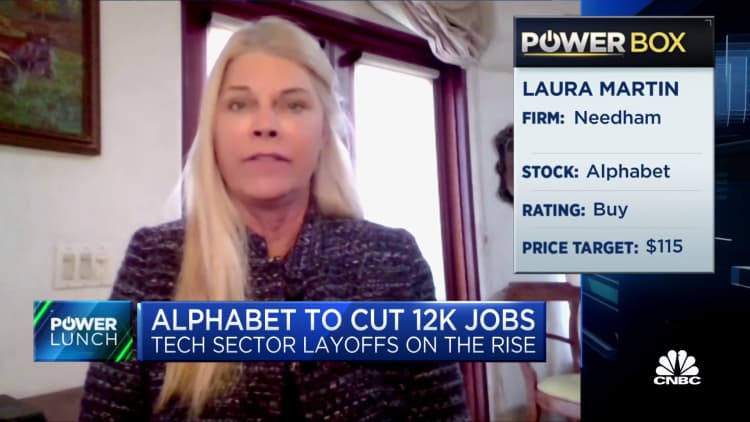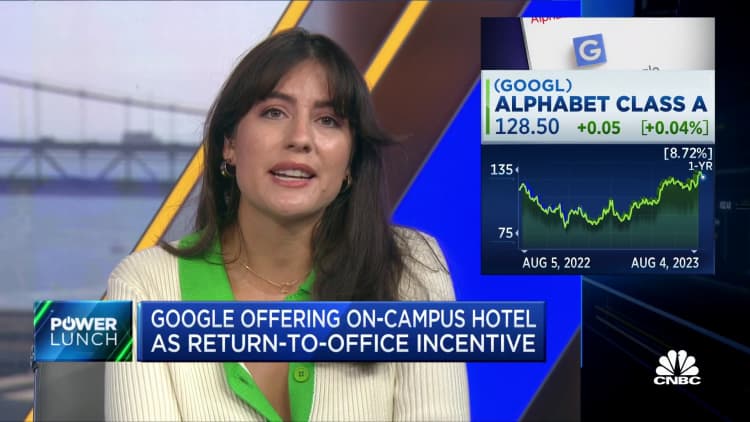Ruth Porat, Alphabet’s chief financial officer, appears on a panel session at the World Economic Forum in Davos, Switzerland, on May 24, 2022.
Hollie Adams | Bloomberg | Getty Images
Google said in May that, starting in December, it would begin purging inactive accounts, a warning sign of sorts to people who use multiple logins. Recently, Google has been nudging people over email to remind them what will happen to those stagnant accounts.
Critics of Google’s strategy are making their voices heard.
Sabrina Meherally, CEO of Canadian design firm Pause and Effect, wrote in a post on LinkedIn last week that she received the warning via an email with the vanilla subject line, “Updating our Google Account inactivity policy.”
“I’m of the mind that email subject lines should be explicitly clear, especially if a consequence is attached to a customer’s inaction,” she wrote. “With the number of emails and spam that enter in my inbox, I could have very well deleted it.”
One thing Meherally suggested could be more effective is a “banner on Google.com,” the company’s ubiquitous search engine.
Users commonly maintain multiple accounts, allowing them to use different email addresses for different purposes, and to store online photos and documents in separate places. But for Google, storage space on free accounts is a cost. And the company’s focus this year has been on profitability.
Still, consumers aren’t accustomed to this new form of Google aggression.
“What are you doing Google,” a person using the handle StoneRose95 on X, formerly known as Twitter, wrote in a post, with a screenshot of the email message attached.
The new policy doesn’t apply to schools or businesses using Google accounts. Paying subscribers for services like extra storage are also safe. The standard 15GB allotment should last three years or more for 80% of account holders, Google said in a 2020 blog post.
Sign in once every two years
Keeping that extra account doesn’t require much work. All a user has to do is sign in at least once every two years. Google said in its May post that it intends to carry out the purge to keep attackers from taking over neglected personal accounts. It told users they would receive “multiple notifications over the months leading up to deletion.”
“Forgotten or unattended accounts often rely on old or re-used passwords that may have been compromised, haven’t had two factor authentication set up, and receive fewer security checks by the user,” Ruth Kricheli, a Google vice president, wrote in the post. “Our internal analysis shows abandoned accounts are at least 10x less likely than active accounts to have 2-step-verification set up.”
A Google spokesperson said this is the first time the company has implemented such a policy.
Microsoft operates similarly. With some exceptions, users must sign in to their accounts at least once every two years to keep them active, and the company reserves the right to close accounts when people don’t comply.
Left unsaid in Krichell’s post is that Google parent Alphabet is in cost-saving mode.
For the first time in its almost two decades as a public company, Google revenue has grown by less than 10% for four consecutive quarters. Advertisers have turned cautious because of the uncertain economy, and Google’s YouTube service is seeing increased competition from TikTok.
Alphabet has cut thousands of jobs this year, slowed hiring and focused on efficiency. Finance Chief Ruth Porat has described these moves as “efforts to reengineer our cost base.” Inside the company, she’s told employees to expect revisions to PC refresh cycles, shuttle schedules, cafeteria operations and even fitness classes, CNBC has reported.

It’s a familiar theme across the tech sector. Amazon, Microsoft and Meta have all dialed down the emphasis on growth and sought ways to lower expenses.
When it comes to Google’s new account policy and the stated security reasons behind the changes, a developer named Chris Beiser questioned the company’s logic.
“Old accounts are more likely to be hacked, so we will delete the accounts? Like saying if a bank is not secure we should burn all its money before a bank robber can rob it,” Beiser wrote on X. “This article feels really disingenuous.”
Emmett Shear, co-founder and former CEO of Amazon-owned video streaming service Twitch, criticized the original announcement, expressing concern that the change would lead to the vanishing of many old YouTube videos.
But Google quickly updated the blog post to say that “we do not have plans to delete accounts with YouTube videos at this time.”
“Hooray!” Shear wrote on X in response to the tweak.
Stephanie Murphy, a parent, took to TikTok to express her displeasure with Google’s new approach to stagnant accounts. In the video, Murphy said she created an account for her daughter. She never accesses the accounts, but instead sends emails there for her daughter to see in the future, like a journal.
“Everything was going fine until I received this email from Google today,” she said in the video. “I literally only use that account to send emails to, and I never go into the account.”
WATCH: Google offering on-campus hotel as return-to-office incentive


